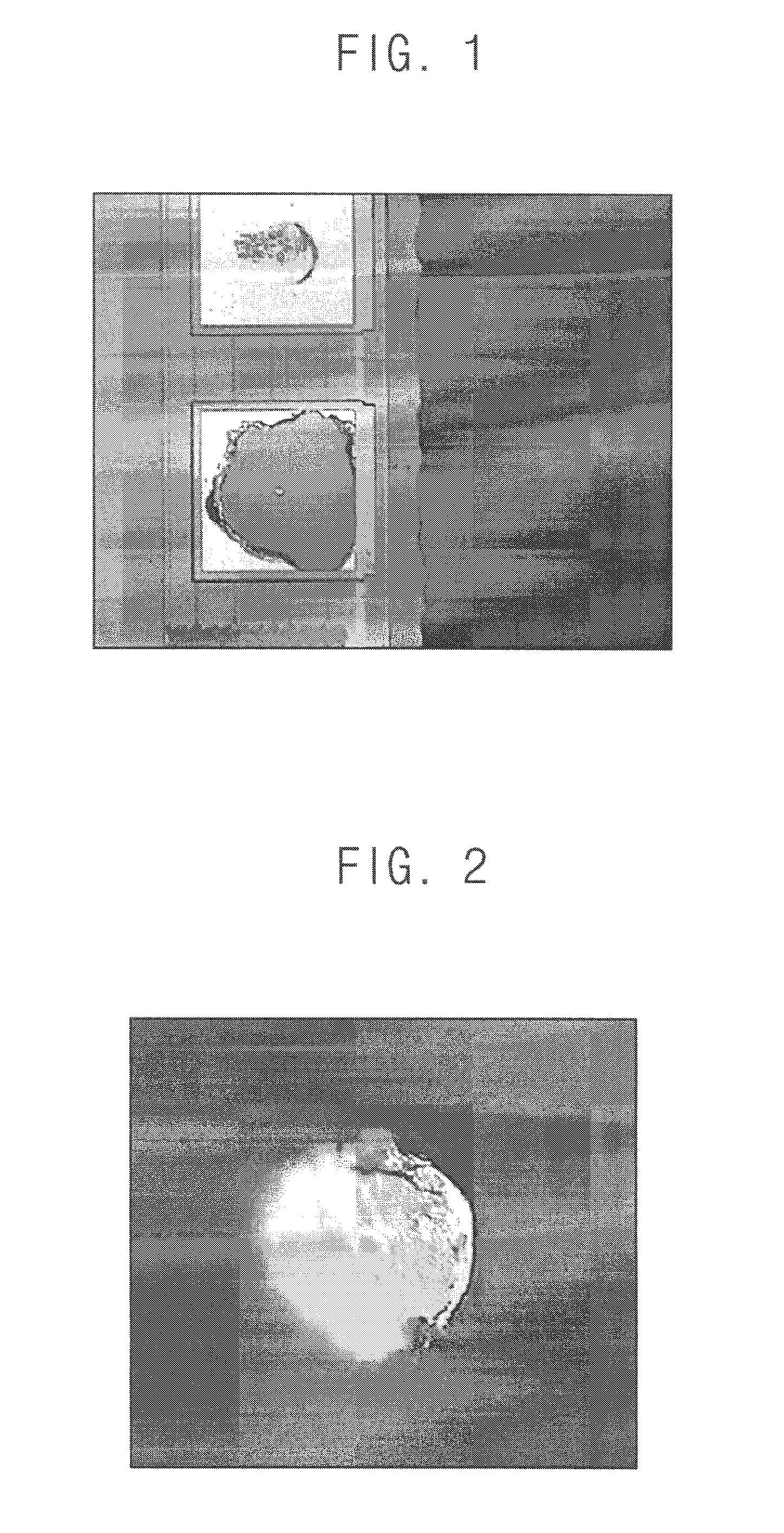Semiconductor device having an Anti-pad peeling-off structure
- Summary
- Abstract
- Description
- Claims
- Application Information
AI Technical Summary
Benefits of technology
Problems solved by technology
Method used
Image
Examples
embodiment 1
[0035]FIGS. 4 to 9 are cross-sectional views illustrating a method of manufacturing a semiconductor device having an anti-pad peeling-off structure in accordance with a first example embodiment.
[0036]Referring to FIG. 4, a semiconductor device according to a first example embodiment is divided into a region for elements to be formed and a region for pads to be formed. The pads may be formed in a peripheral region of the semiconductor device. Alternatively, the pads may be formed in the central region according to an arrangement of pins in a packaging process.
[0037]Hereinafter, a method of manufacturing a semiconductor device including pads formed in a right peripheral region will explained for clarity.
[0038]An isolation layer 105 is formed in a semiconductor substrate 100. The isolation layer 105 may be formed by a shallow trench isolation (STI) process or a local oxidation (LOCOS) process.
[0039]After forming the isolation layer 105, a gate dielectric layer 110 is formed on the semi...
embodiment 2
[0071]FIGS. 13 to 19 are cross-sectional views illustrating a method of manufacturing a semiconductor device having an anti-pad peeling-off structure in accordance with a second exemplary embodiment.
[0072]Referring to FIG. 13, a semiconductor device according to a second exemplary embodiment is divided into a region for elements to be formed and a region for pads to be formed. The pads may be formed in a peripheral region of the semiconductor device. Alternatively, the pads may be formed in the central region according to an arrangement of pins in a packaging process.
[0073]Hereinafter, a method of manufacturing a semiconductor device including pads formed in a right peripheral region will be explained for clarity.
[0074]An isolation layer 205 is formed in a semiconductor substrate 200. The isolation layer 205 may be formed by a STI process or a LOCOS process.
[0075]After forming the isolation layer 205, a gate dielectric layer 210 is formed on the semiconductor substrate 200. The semi...
embodiment 3
[0103]FIGS. 20 to 39 are cross-sectional views illustrating a method of manufacturing a flash memory device having an anti-pad peeling-off structure in accordance with a third exemplary embodiment.
[0104]Referring to FIG. 20, in a method of forming a flash memory device according to a third exemplary embodiment, a tunnel oxide layer 305, an electrode layer 310 and a hard mask layer 315 are sequentially formed on a substrate 300. The substrate 300 may include a silicon wafer or a SOI substrate.
[0105]In this embodiment, the substrate may be divided into a region A for memory cells to be formed and a region B for peripheral circuits such as high voltage transistors to be formed. Slits may be formed on the peripheral region B.
[0106]The tunnel oxide layer 305 may be formed to have a thickness of 50 Å to 100 Å by a thermal oxidation process. The tunnel oxide layer 305 may be formed using a material having excellent film characteristics for reading / writing operations of the device. Accordin...
PUM
 Login to View More
Login to View More Abstract
Description
Claims
Application Information
 Login to View More
Login to View More - R&D
- Intellectual Property
- Life Sciences
- Materials
- Tech Scout
- Unparalleled Data Quality
- Higher Quality Content
- 60% Fewer Hallucinations
Browse by: Latest US Patents, China's latest patents, Technical Efficacy Thesaurus, Application Domain, Technology Topic, Popular Technical Reports.
© 2025 PatSnap. All rights reserved.Legal|Privacy policy|Modern Slavery Act Transparency Statement|Sitemap|About US| Contact US: help@patsnap.com



